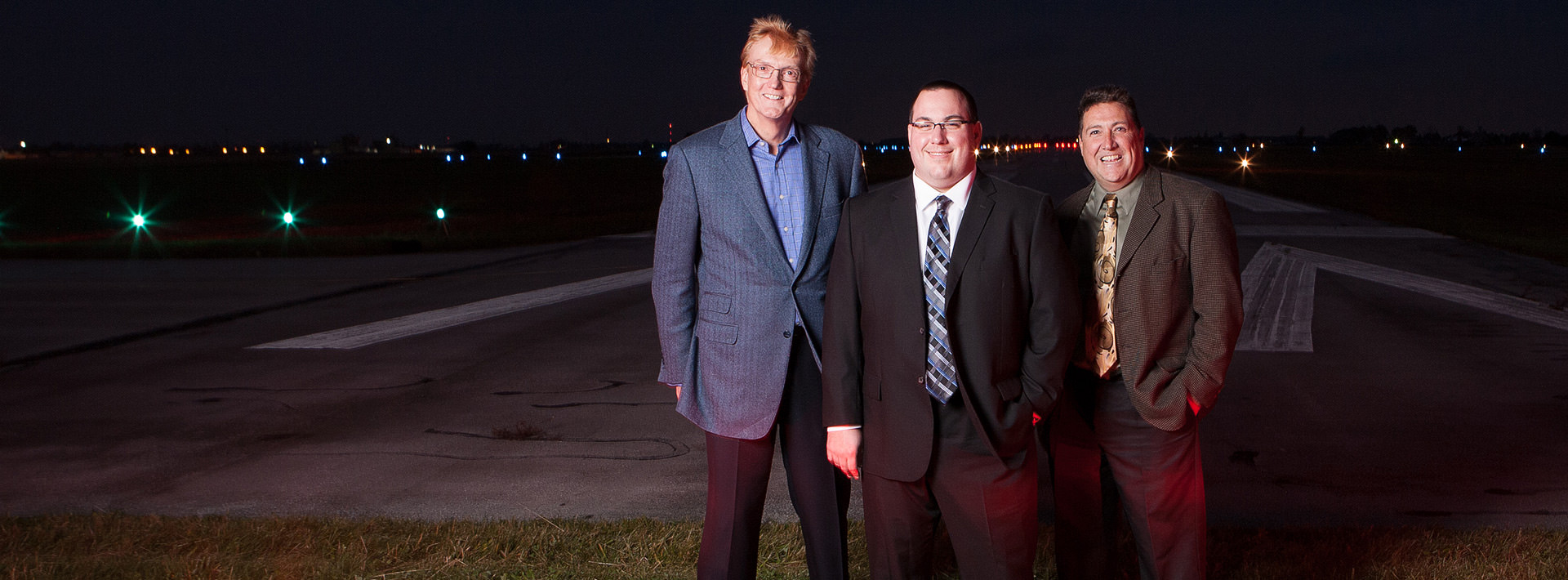Saving regional airports
BGSU team creates resource for communities

By Bonnie Blankinship
When it comes to attracting and retaining airline service to a community, offering incentives to carriers is not enough, a study by Bowling Green State University researchers has found. A strong, united community commitment is necessary to not only entice carriers but to create sustainable service. And even then, regional airports are at the mercy of the economy and the airlines’ overall plans.
The report and recommendations generated by the study team is posted on the Transportation Research Board website as a resource for regional airports. These airports play an important role in the economic health of communities in terms of attracting and keeping business as well as jobs and ancillary services. But they have been hard hit in this era of increasing airline consolidation and two recent recessions that have decreased the overall demand for air travel.
“It’s kind of a ‘chicken and egg’ situation,” said BGSU team leader Dr. Russell Mills, an assistant professor of political science specializing in public administration. “Airports are important to communities’ economic health, but airlines are attracted to communities that show economic growth and market demand.”
The BGSU team, which included Dr. Michael Carroll, former director of BGSU’s Center for Regional Development, and Will Burns, assistant director of the center, has presented its findings at several major air transportation conferences such as the National Air Service Conference, the Transportation Research Board’s annual meeting in Washington, D.C., and the Western Regional Science Association. Mills has appeared on local television news shows to share the study’s findings and recommendations, and the report has been featured in the Wall Street Journal and Bloomberg News.
The 18-month study analyzed the impact of airline industry changes on smaller and non-hub airports and the areas they serve and provided recommendations on what steps could be effective, according to a region’s specific situation.
The project was funded by a $300,000 grant from the Federal Aviation Administration (FAA)-funded Airport Cooperative Research Program.
Partnering with GRA Inc., an air transportation-industry economic and policy consulting firm, and Strategic Partners and Associates, which works in air service development, Mills, Carroll and Burns examined data from a dozen regional airports nationally and visited five for a more intensive study that included focus groups and meetings with economic development, business and civic leaders, elected officials and airport managers. The case study airports were in Toledo, Ohio; Sonoma County, Calif., Redding, Calif., Fargo, N.D., and Asheville, N.C.
Although airports are governed by Federal Aviation Administration rules on how airport revenue can be used, the team found some creative approaches to luring airlines, Mills said. The ideas ranged from guaranteeing revenue by having the community contribute funds to cover any losses in the first years to creating a “travel bank” in which the community pledges to purchase a number of tickets to demonstrate the demand.
They can also contribute toward the cost of fuel or offer to waive certain fees airlines normally pay to use an airport. In addition, communities can dedicate money for marketing to run ads whenever flights are added so as to help ensure their success.
All of these have risks if the demand does not pan out, Mills said, and, in fact, the study showed that “The financial incentives were the most effective at attracting new service, but the new service often ended when the incentives ended.” In addition, although airlines have come to expect incentives, the incentives only work if they mesh with an airline’s existing business model. Therefore, communities are advised to study that closely before choosing what to offer. Before committing themselves, communities must “weigh the cost of the initial investment with the likelihood that their market can sustain the service once the incentives end,” the report cautioned.
The report also recommended that communities form a dedicated airline attraction committee that comprises local business leaders whose companies rely on air travel, as well as civic and elected officials. Those committees should become well informed so they can communicate specific information to potential air service carriers.
Along with a having good airport manager, one thing that seems to be a requirement for successful, sustained service is “cross-pollination among the boards of the local chambers of commerce, visitors bureau, economic development organizations and airport commissions,” Mills said.
“Communities getting together to support what they have is very important,” he said. “People love their regional airports.”
A good example is the small, northern California town of Redding, which is fairly remote and does not have a lot of industry. But it does have a very successful “mega church” that attracts many visitors and program participants. Redding mounted an informational campaign on the importance of air service to the community, which resulted in investments and pledges.
“They made the case that air service is a huge economic driver,” Burns said.
Mills described Fargo, N.D., as a “well-oiled machine” and a “model city” in which politicians, civic leaders and business all work together to make sure air service is reliable and uninterrupted.
Conversely, Toledo Express has had mixed success attracting and retaining carriers, in part because Toledoans have largely “accepted Detroit as their regional airport,” Mills said. The airport has suffered one of the largest decreases in commercial air service in the nation since 2001 as a result of the dramatic decline in the local automotive industry and loss of related jobs, climbing fuel prices, developments at other regional airports such as Cleveland and Cincinnati, and airlines’ switch to larger planes that require increased demand to ensure profitability.
Updated: 12/02/2017 12:48AM
